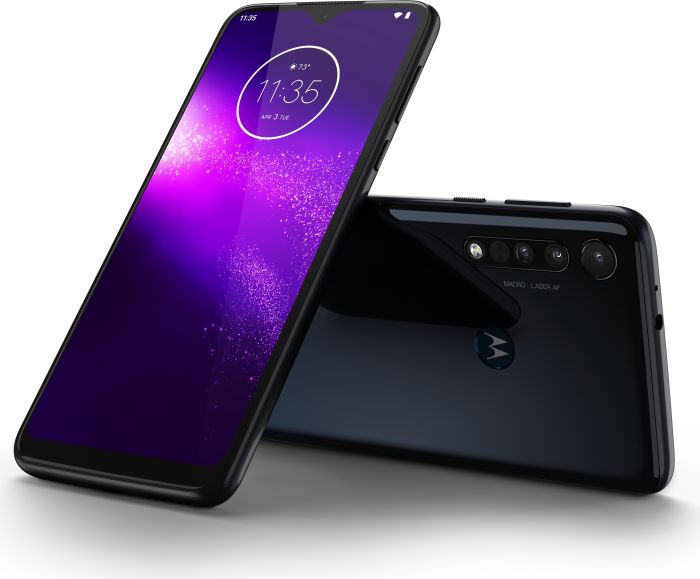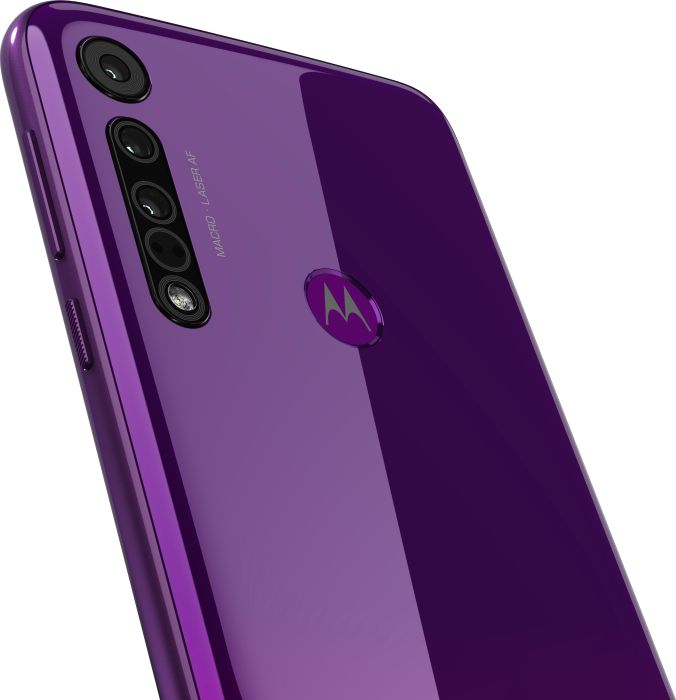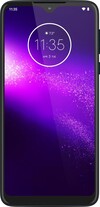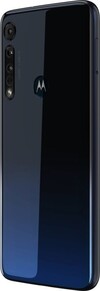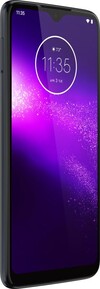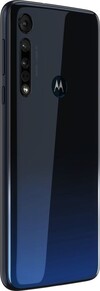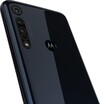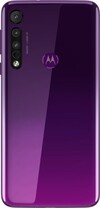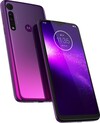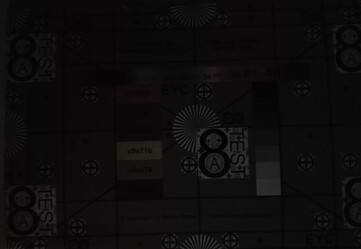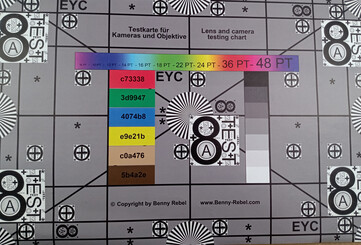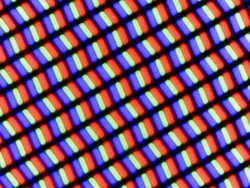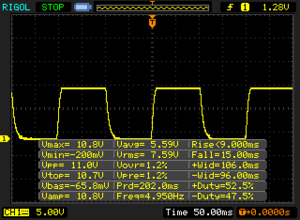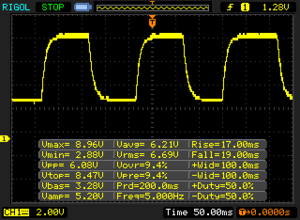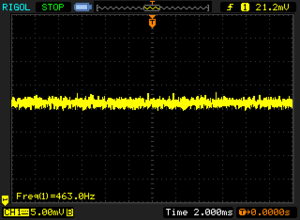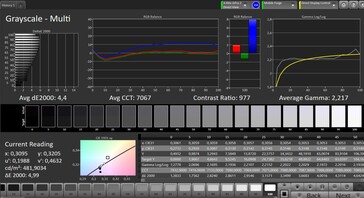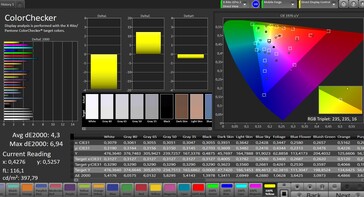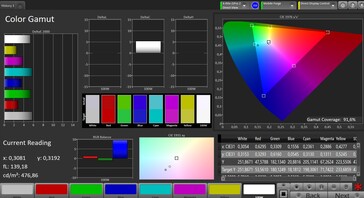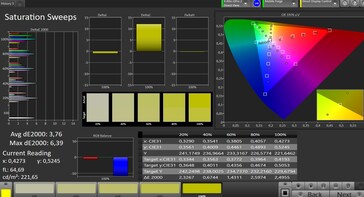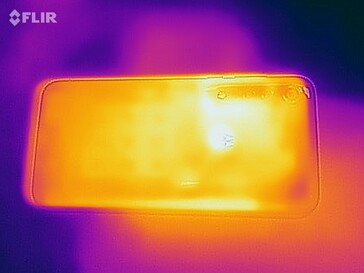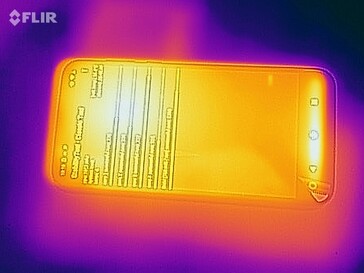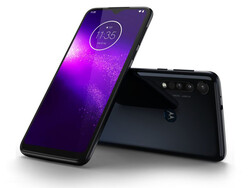Motorola One Macro Smartphone Review - The camera as a weak spot
Comparison Units
Bewertung | Rating Version | Datum | Modell | Gewicht | Laufwerk | Groesse | Aufloesung | Preis ab |
|---|---|---|---|---|---|---|---|---|
| 76.8 % v7 (old) | v7 (old) | 11 / 2019 | Motorola One Macro Helio P70, Mali-G72 MP3 | 186 g | 64 GB eMMC Flash | 6.20" | 1520x720 | |
| 70.9 % v7 (old) | v7 (old) | 10 / 2019 | Gigaset GS195 SC9863A, GE8322 / IMG8322 | 180 g | 32 GB eMMC Flash | 6.18" | 2246x1080 | |
| 78.4 % v7 (old) | v7 (old) | 09 / 2019 | Xiaomi Mi A3 SD 665, Adreno 610 | 173.8 g | 64 GB UFS 2.1 Flash | 6.09" | 1560x720 | |
| 75.5 % v7 (old) | v7 (old) | 07 / 2019 | Samsung Galaxy A20e Exynos 7884B, Mali-G71 MP2 | 141 g | 32 GB eMMC Flash | 5.80" | 1560x720 |
Case, Equipment and Operation
The Motorola One Macro looks very similar to the Motorola Moto G8 Plus in the blue version. Only the slightly larger waterdrop notch and the slightly darker violet colour make the One Macro unique. The back is made of plastic and is highly glossy, it is very receptive to fingerprints. The case's stability is good, even if you can easily press it in in some places. The smartphone is IP52 certified, but this only means protection against splashing water, you shouldn't submerge the smartphone. The Motorola phone is quite big and a bit heavier than the other phones.
With 64 GB mass memory and 4 GB RAM the Motorola One Macro is well equipped, you can expand the memory via microSD or you put a second SIM card in the slot. The device has a USB-C port, which is only connected at USB-2 speed. The internet speed is acceptable, but doesn't come close to the very fast Xiaomi Mi A3.
The touch screen is easy to use and there is a fingerprint sensor on the back that unlocks the device reliably and quickly. Motorola offers some control gestures and you can reduce the menu bar to just one button and corresponding gestures.
| Networking | |
| iperf3 transmit AX12 | |
| Xiaomi Mi A3 | |
| Motorola One Macro | |
| Samsung Galaxy A20e | |
| Gigaset GS195 | |
| iperf3 receive AX12 | |
| Xiaomi Mi A3 | |
| Motorola One Macro | |
| Samsung Galaxy A20e | |
| Gigaset GS195 | |
Cameras - Low resolution macro lens
The name says it all: The Motorola One Macro comes with an additional lens for close-ups in the macro range. This really makes for nice shots when you get very close to a lens. However, with a resolution of only 2 megapixels, the images don't get very large and the quality suffers in the magnification. The main camera offers 13 megapixels, it has problems with the detail sharpness and offers only little drawing in very dark areas. Zooming with the two camera lenses is not possible by the way, there is only a digital zoom. A third lens can be found on the back of the camera and is used to calculate depth of field when taking portraits or close-ups.
Videos can be recorded with a maximum of 1080p and 30 frames per second. The exposure reacts quite quickly to changing lighting conditions, but slight gradations are visible. The image quality is good, but in dark situations the camera quickly starts with clear pixel noise.
The front camera resolves with 8 megapixels and takes decent, but somewhat grainy photos.
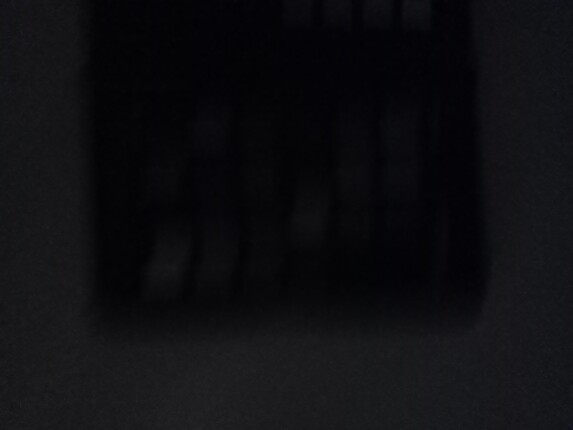
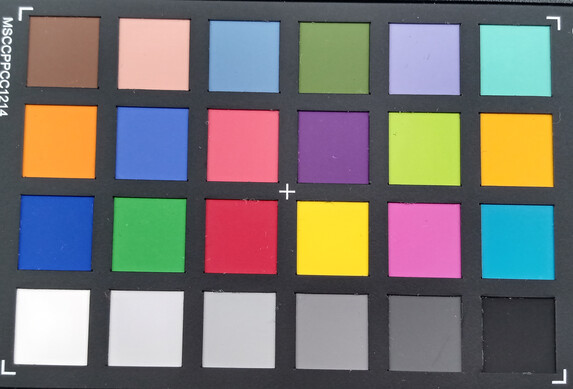
Display - Bright and true to color
The screen has a resolution of 1,520 x 720 pixels and is thus on a class level that goes even further, shows the Gigaset GS195. It's an IPS display, the brightness with an exposed brightness sensor is quite high with a maximum of 581 cd/m². The illumination is also convincing with 92% uniformity, black level and contrast are also on a good level.
Below 10 % brightness we notice a clear flickering of the screen, probably caused by PWM. The quite slow reaction times should be considered by gamers. The grayscale display convinces with quite small deviations, a minimal violet tint is visible. Also the color deviations are on a low level.
Overall, the display of the Motorola One Macro doesn't perform badly, but the resolution could be higher.
| |||||||||||||||||||||||||
Brightness Distribution: 92 %
Center on Battery: 581 cd/m²
Contrast: 1383:1 (Black: 0.42 cd/m²)
ΔE ColorChecker Calman: 4.3 | ∀{0.5-29.43 Ø4.78}
ΔE Greyscale Calman: 4.4 | ∀{0.09-98 Ø5}
91.6% sRGB (Calman 2D)
Gamma: 2.217
CCT: 7067 K
| Motorola One Macro IPS, 1520x720, 6.2" | Gigaset GS195 IPS, 2246x1080, 6.2" | Xiaomi Mi A3 AMOLED, 1560x720, 6.1" | Samsung Galaxy A20e IPS, 1560x720, 5.8" | |
|---|---|---|---|---|
| Response Times | 0% | 77% | -5% | |
| Response Time Grey 50% / Grey 80% * (ms) | 36 ? | 42 ? -17% | 8 ? 78% | 44.4 ? -23% |
| Response Time Black / White * (ms) | 24 ? | 20 ? 17% | 6 ? 75% | 20.8 ? 13% |
| PWM Frequency (Hz) | 463 ? | 100 ? | 219 | 349.7 ? |
| Screen | -39% | -37% | -33% | |
| Brightness middle (cd/m²) | 581 | 487 -16% | 348 -40% | 475 -18% |
| Brightness (cd/m²) | 565 | 507 -10% | 355 -37% | 473 -16% |
| Brightness Distribution (%) | 92 | 84 -9% | 91 -1% | 93 1% |
| Black Level * (cd/m²) | 0.42 | 0.55 -31% | 0.35 17% | |
| Contrast (:1) | 1383 | 885 -36% | 1357 -2% | |
| Colorchecker dE 2000 * | 4.3 | 5.67 -32% | 5.86 -36% | 6.8 -58% |
| Colorchecker dE 2000 max. * | 6.94 | 13.54 -95% | 15.6 -125% | 13.4 -93% |
| Greyscale dE 2000 * | 4.4 | 8.2 -86% | 3.6 18% | 8.7 -98% |
| Gamma | 2.217 99% | 2.27 97% | 2.232 99% | 2.33 94% |
| CCT | 7067 92% | 7569 86% | 7051 92% | 9385 69% |
| Total Average (Program / Settings) | -20% /
-32% | 20% /
-9% | -19% /
-28% |
* ... smaller is better
Display Response Times
| ↔ Response Time Black to White | ||
|---|---|---|
| 24 ms ... rise ↗ and fall ↘ combined | ↗ 9 ms rise | |
| ↘ 15 ms fall | ||
| The screen shows good response rates in our tests, but may be too slow for competitive gamers. In comparison, all tested devices range from 0.1 (minimum) to 240 (maximum) ms. » 53 % of all devices are better. This means that the measured response time is worse than the average of all tested devices (20.2 ms). | ||
| ↔ Response Time 50% Grey to 80% Grey | ||
| 36 ms ... rise ↗ and fall ↘ combined | ↗ 17 ms rise | |
| ↘ 19 ms fall | ||
| The screen shows slow response rates in our tests and will be unsatisfactory for gamers. In comparison, all tested devices range from 0.165 (minimum) to 636 (maximum) ms. » 49 % of all devices are better. This means that the measured response time is worse than the average of all tested devices (31.6 ms). | ||
Screen Flickering / PWM (Pulse-Width Modulation)
| Screen flickering / PWM detected | 463 Hz | ≤ 10 % brightness setting | |
The display backlight flickers at 463 Hz (worst case, e.g., utilizing PWM) Flickering detected at a brightness setting of 10 % and below. There should be no flickering or PWM above this brightness setting. The frequency of 463 Hz is relatively high, so most users sensitive to PWM should not notice any flickering. However, there are reports that some users are still sensitive to PWM at 500 Hz and above, so be aware. In comparison: 53 % of all tested devices do not use PWM to dim the display. If PWM was detected, an average of 8118 (minimum: 5 - maximum: 343500) Hz was measured. | |||
Performance, Emissions and Battery life
With the MediaTek Helio P70, a contemporary SoC is installed that offers quite a lot of performance for the purchase price. In fact, the Motorola One Macro is faster in many benchmarks than any other comparable device. The Xiaomi Mi A3 is also a bit slower. So if you want a lot of performance for little money, you are well advised to use our test device.
Memory access is quite fast, but with the Toshiba Exceria Pro M501, our reference micro SD card, the phone can't do anything. We use a slower card from SanDisk and still get acceptable access values.
The maximum warming is very low, so there should be no unpleasant surprises. The mono speaker of the One Macro isn't particularly loud, but the sound is quite OK and the device doesn't boom at maximum volume. Voices are reproduced well and music sounds good, but somewhat distanced. There's a 3.5mm connector, and headphones and speakers can easily be connected both above and via Bluetooth.
At 4,000 mAh, the battery is at the usual level of the price range. With 16:13 hours in our WLAN test, the smartphone lasts forever and is also sufficient for two complete working days of non-stop operation. The included charger offers 10 watts of power and therefore no quick charging. You should allow at least two hours for a full charge.
| PCMark for Android | |
| Work performance score (sort by value) | |
| Motorola One Macro | |
| Gigaset GS195 | |
| Xiaomi Mi A3 | |
| Samsung Galaxy A20e | |
| Average Mediatek Helio P70 (7160 - 11781, n=10) | |
| Work 2.0 performance score (sort by value) | |
| Motorola One Macro | |
| Gigaset GS195 | |
| Xiaomi Mi A3 | |
| Samsung Galaxy A20e | |
| Average Mediatek Helio P70 (5992 - 8365, n=12) | |
| GFXBench | |
| on screen Aztec Ruins Normal Tier Onscreen (sort by value) | |
| Motorola One Macro | |
| Gigaset GS195 | |
| Xiaomi Mi A3 | |
| Samsung Galaxy A20e | |
| Average Mediatek Helio P70 (6.9 - 15, n=12) | |
| Average of class Smartphone (6.2 - 166, n=209, last 2 years) | |
| 1920x1080 Aztec Ruins Normal Tier Offscreen (sort by value) | |
| Motorola One Macro | |
| Gigaset GS195 | |
| Xiaomi Mi A3 | |
| Samsung Galaxy A20e | |
| Average Mediatek Helio P70 (6.1 - 9.3, n=12) | |
| Average of class Smartphone (3.4 - 367, n=209, last 2 years) | |
| on screen Aztec Ruins High Tier Onscreen (sort by value) | |
| Motorola One Macro | |
| Gigaset GS195 | |
| Xiaomi Mi A3 | |
| Samsung Galaxy A20e | |
| Average Mediatek Helio P70 (2.6 - 8.7, n=12) | |
| Average of class Smartphone (0.85 - 144, n=210, last 2 years) | |
| 2560x1440 Aztec Ruins High Tier Offscreen (sort by value) | |
| Motorola One Macro | |
| Gigaset GS195 | |
| Xiaomi Mi A3 | |
| Samsung Galaxy A20e | |
| Average Mediatek Helio P70 (2.8 - 3.7, n=12) | |
| Average of class Smartphone (1.2 - 129, n=209, last 2 years) | |
| Motorola One Macro | Gigaset GS195 | Xiaomi Mi A3 | Samsung Galaxy A20e | Average 64 GB eMMC Flash | Average of class Smartphone | |
|---|---|---|---|---|---|---|
| AndroBench 3-5 | -28% | 60% | 7% | 8% | 587% | |
| Sequential Read 256KB (MB/s) | 277 | 107.3 -61% | 502 81% | 300.4 8% | 277 ? 0% | 2223 ? 703% |
| Sequential Write 256KB (MB/s) | 223 | 29.42 -87% | 184 -17% | 103.6 -54% | 178.4 ? -20% | 1838 ? 724% |
| Random Read 4KB (MB/s) | 59.9 | 28.43 -53% | 126.9 112% | 79.8 33% | 60.7 ? 1% | 295 ? 392% |
| Random Write 4KB (MB/s) | 53.3 | 4.97 -91% | 117.4 120% | 13.18 -75% | 33.8 ? -37% | 335 ? 529% |
| Sequential Read 256KB SDCard (MB/s) | 79.5 ? | 80.9 ? 2% | 67.8 ? -15% | 79.2 ? 0% | 77.4 ? -3% | |
| Sequential Write 256KB SDCard (MB/s) | 28.2 ? | 62.1 ? 120% | 50.1 ? 78% | 64.3 ? 128% | 58.3 ? 107% |
Temperature
(+) The maximum temperature on the upper side is 39 °C / 102 F, compared to the average of 35.2 °C / 95 F, ranging from 21.9 to 247 °C for the class Smartphone.
(+) The bottom heats up to a maximum of 39 °C / 102 F, compared to the average of 34 °C / 93 F
(±) In idle usage, the average temperature for the upper side is 32.5 °C / 91 F, compared to the device average of 32.9 °C / 91 F.
Loudspeakers
Motorola One Macro audio analysis
(±) | speaker loudness is average but good (80.7 dB)
Bass 100 - 315 Hz
(-) | nearly no bass - on average 64.2% lower than median
(+) | bass is linear (0% delta to prev. frequency)
Mids 400 - 2000 Hz
(-) | nearly no mids - on average 64.2% lower than median
(+) | mids are linear (0% delta to prev. frequency)
Highs 2 - 16 kHz
(-) | nearly no highs - on average 64.2% lower than median
(+) | highs are linear (0% delta to prev. frequency)
Overall 100 - 16.000 Hz
(-) | overall sound is not linear (120.2% difference to median)
Compared to same class
» 89% of all tested devices in this class were better, 9% similar, 2% worse
» The best had a delta of 11%, average was 35%, worst was 134%
Compared to all devices tested
» 97% of all tested devices were better, 3% similar, 1% worse
» The best had a delta of 4%, average was 24%, worst was 134%
Xiaomi Mi A3 audio analysis
(+) | speakers can play relatively loud (85.7 dB)
Bass 100 - 315 Hz
(-) | nearly no bass - on average 74.1% lower than median
(+) | bass is linear (0% delta to prev. frequency)
Mids 400 - 2000 Hz
(-) | nearly no mids - on average 74.1% lower than median
(+) | mids are linear (0% delta to prev. frequency)
Highs 2 - 16 kHz
(-) | nearly no highs - on average 74.1% lower than median
(+) | highs are linear (0% delta to prev. frequency)
Overall 100 - 16.000 Hz
(-) | overall sound is not linear (126% difference to median)
Compared to same class
» 96% of all tested devices in this class were better, 3% similar, 1% worse
» The best had a delta of 11%, average was 35%, worst was 134%
Compared to all devices tested
» 99% of all tested devices were better, 1% similar, 0% worse
» The best had a delta of 4%, average was 24%, worst was 134%
Battery life
| Motorola One Macro 4000 mAh | Gigaset GS195 4000 mAh | Xiaomi Mi A3 4030 mAh | Samsung Galaxy A20e 3000 mAh | Average of class Smartphone | |
|---|---|---|---|---|---|
| Battery Runtime | |||||
| WiFi Websurfing (h) | 16.2 | 14.5 -10% | 16.4 1% | 11.9 -27% | 19.2 ? 19% |
Pros
Cons
Verdict - Lots of power and battery
The Motorola One Macro convinces with its pure Android, the chic exterior and the long battery life. The camera is rather average: The main lens lacks sharpness, the macro lens lacks details. It's also annoying that there's no optical zoom, even though there are two lenses with different focal lengths.
If you're looking for an affordable smartphone with plenty of power and a long battery life, you've got it. The camera isn't quite convincing.
The color-true screen also pleases with its high brightness and the cool operation with quite high performance for the class is also a great thing. So there's a lot you can like about the Motorola One Macro, but the camera isn't one of them.
Motorola One Macro
- 11/15/2019 v7 (old)
Florian Schmitt




